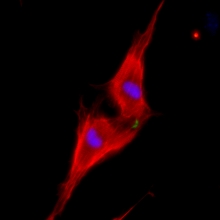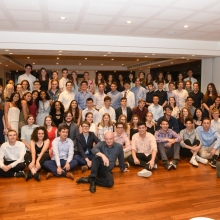Weizmann ranked #2 globally
Prestigious Nature ranking prioritizes quality, raising the profile of small but serious institutions
Briefs

The Weizmann Institute ranked second among global institutions in an assessment based on journal article quality, published by Nature, reinforcing its reputation as a compact but powerful engine of scientific knowledge.
The prestigious British scientific journal released a new “normalized ranking” alongside its annual top 100 Nature Index, which draws on a more traditional metric known as the fractional count (FC), which measures all contributions an institution has made to articles in specific leading publications. Revealing a very different set of academic leaders, the new normalized ranking takes into account the number of high-quality articles published as a proportion of an institution’s overall output in the natural sciences. In doing so, the ranking is able to compare institutions of varying sizes on the same basis.
“The inclusion this year of a normalized ranking alongside the standard Nature Index annual tables is especially interesting because the ranking draws to light some smaller institutes that are proportionally outstripping research powerhouses and would otherwise remain buried much lower down in the standard rankings,” says David Swinbanks, founder of the Nature Index. “The smallest institutions in the top 10 have some common features: ambition, as disclosed by mission statements about striving to be the best in the world, interdisciplinarity, with the strong embrace of collaboration across fields, and in several cases, the backing of Nobel laureates.”
In the normalized ranking, the Weizmann Institute placed behind only Cold Spring Harbor Laboratory in New York.
The fractional count is the share of all of an institution’s contributions to 60,000 articles in 82 top journals in 2018. On that score, the Weizmann Institute comes in 65th worldwide. The normalized ranking, however, is a measure of that FC figure against a given institution’s total article output in natural sciences, utilizing a database of 3.88 million articles. In this way, reflects both the prolific and high-quality nature of a small institution like Weizmann.
“We have known for a long time that size is irrelevant when it comes to excellence in science. For the Weizmann Institute of Science, striving to be the best involves attracting the best scientists and letting them follow their curiosity,” says Weizmann Institute President Prof. Daniel Zajfman. “Interdisciplinarity and collaboration across fields and across countries are simply part of our DNA, and we are proud of that fact. The Nature Index normalized ranking truly showcases the quality of top research, showing you don’t have to be big to be on the cutting edge of global science.”








